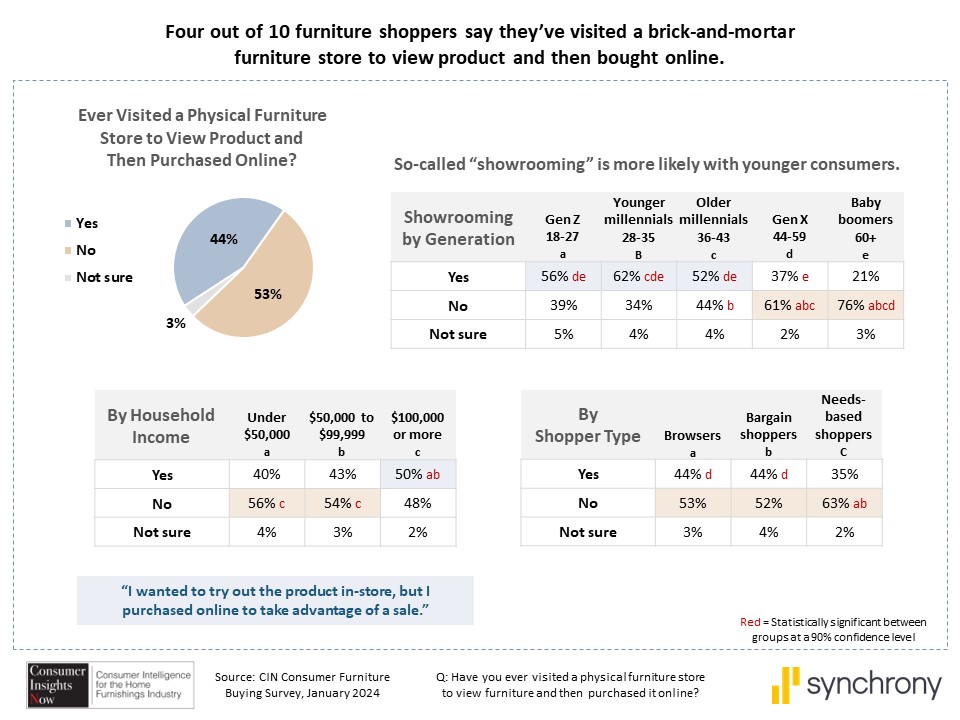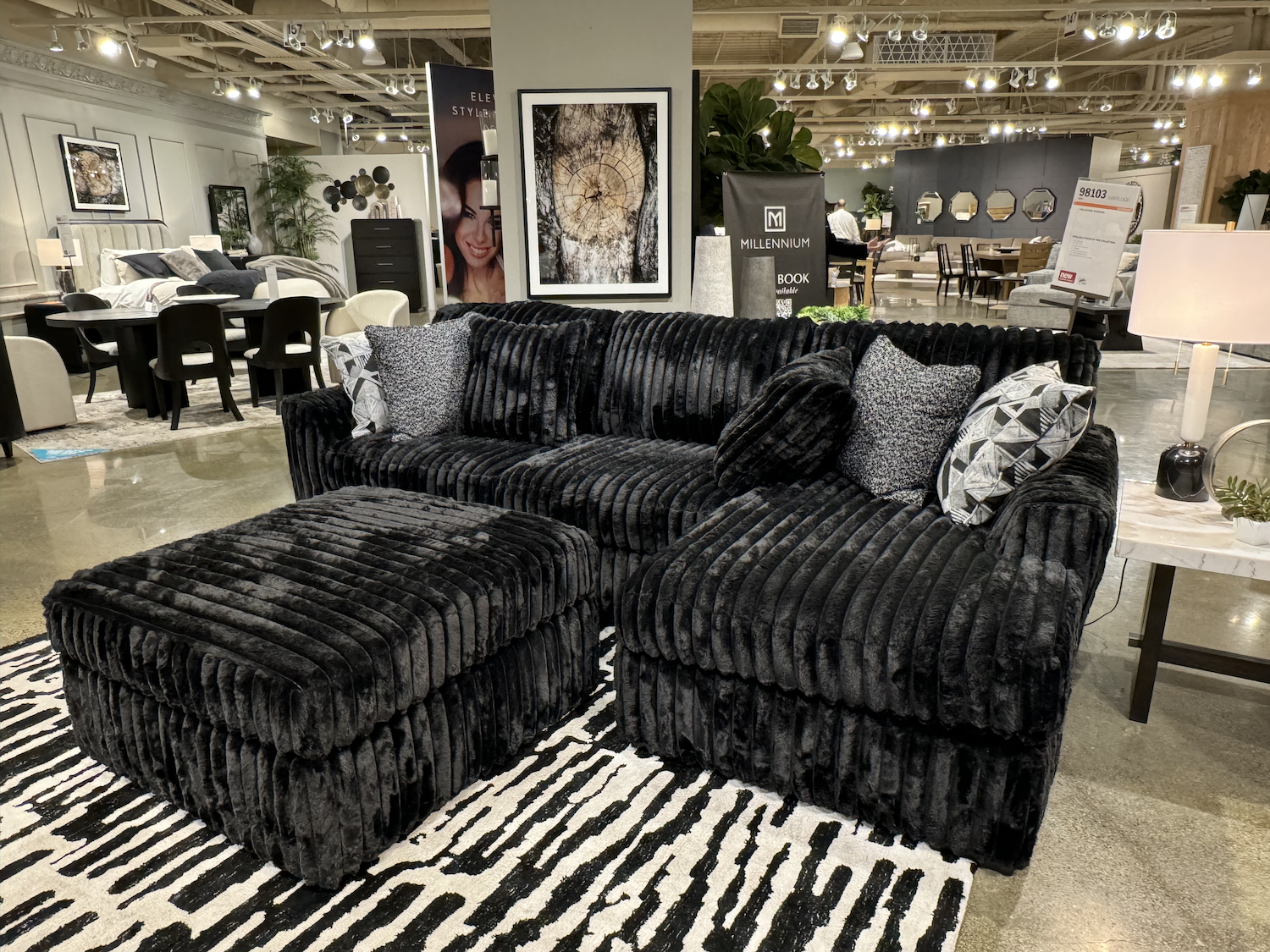Over the past few weeks, Consumer Insights Now has shared a number of different reports that are all born out of consumer research the outlet recently conducted. The survey of over 1,800 U.S. shoppers shed light on their design preferences, their buying plans for the first half of the year, and how they prefer to shop for furniture and bedding product. All respondents plan to purchase one or more home furnishings product during the first half of the year, according to CIN, and the sample includes a wide mix of demographics.
The most recent (and final) report to come out of the survey might be the most interested to retailers in the furniture and bedding segment as it dove deep into seemingly every aspect of consumers’ shopping preferences.
Exciting to see is that more than three-in-four consumers said they prefer to purchase their furniture in a brick-and-mortar retail store as opposed to online (77 percent vs. 23 percent) – evidence of the staying power of the physical retail store. While obvious, the biggest benefit that consumers identified with the in-store experience is the ability to physically interact with the product and test it out prior to making the purchase.
“Shopping in-store is a whole vibe,” one consumer said in the report. “One can really look and be happy while doing so because there’s so much to be inspired by. Online, you can’t feel the fabric and textures.”
Those in-store shoppers tend to be incredibly loyal as well, it turns out. Of the 77 percent who prefer in-store shopping, six-in-10 said they shop the same furniture store most of the time or always. And the younger the consumer, the more likely they are to remain loyal to a single location – 8 percent of Gen Z shoppers said they always go to the same store compared to just 2 percent of Baby Boomers.
While in-store shopping still prevails, there’s a growing interest in and popularity around showrooming – the act of visiting a store to view and test product but then opting to purchase the product online. Of those surveyed, 44 percent said they had “showroomed” before. Sofas, bedroom furniture and mattresses are the top products when it comes to showrooming.

Looked at from a generational perspective, showrooming is more prevalent among younger shoppers. Younger millennials (28-35 years old) were the top cohort in terms of showrooming with 62 percent of those respondents saying they have. Gen Z (56 percent) and older millennials (52 percent) followed close behind. On the other end of the spectrum, only 21 percent of Baby Boomers said they showroom alongside just 37 percent of Gen X respondents.
Two main factors influence a consumer’s decision to showroom a retail location: price and shipping. They’ll test out the product in person to see if they like it and then will scour the internet for the best deal, a sale and to see if they can find that product available from an outlet that will offer free shipping.
Not surprisingly, then, 41 percent of all consumers surveyed identified themselves as “bargain shoppers,” according to CIN. They shop for deals and sales. Another 49 percent said they are “browsers,” consumers who enjoy spending time walking through stores to see what the latest trends are and what’s available – and they may or may not make a purchase. The remaining 10 percent called themselves “needs-based shoppers,” those individuals in the market for something specific; they have a list in mind and only purchase what they need.




